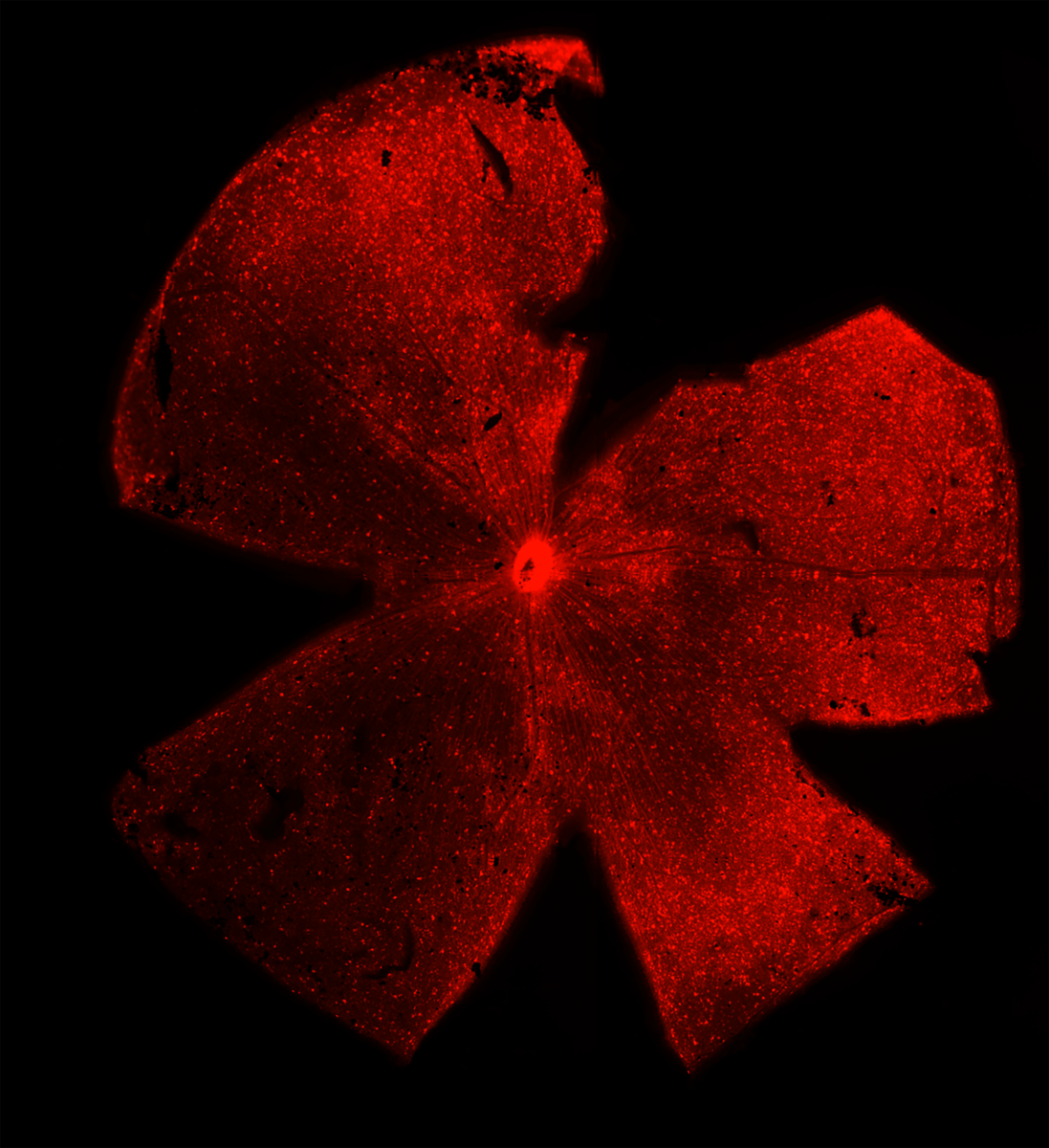Gene Therapy to Treat Glaucoma
Retinal ganglion cells, the cells that are damaged in glaucoma, are highly receptive to gene therapy using adeno-associated virus-mediated gene delivery. Currently, we are involved in a study to investigate the neuroprotective effects of the anti-apoptotic gene Bcl21l1 (BclXL). Preclinical experiments have been conducted in mice with a fusion protein consisting of the mCherry reporter protein fused in frame with mouse BCLXL. DBA/2J mice, which develop inherited glaucoma, have been virally transduced and exhibit long-term protection of both the ganglion cell somas and their axons in the optic nerve. On-going studies are now being conducted to better understand how this therapeutic gene affects normal mitochondrial function (which we think is a major component of the protective effect) and to translate the gene therapy protocol into a large eye animal model of glaucoma as a precursor to advancing the therapy to treat the human disease.

Selected Reading
- Donahue RJ, Fehrman RL, Gustafson JR, Nickells RW. BCLXL gene therapy moderates neuropathology in the DBA/2J mouse model of inherited glaucoma. Cell Death Disease. 12:781, 2021.
- Nickells RW, Schmitt HM, Maes ME, Schlamp CL. AAV2-mediated transduction of the mouse retina after optic nerve injury. Invest. Ophthalmol. Vis. Sci. 58:6091-6104, 2017.
